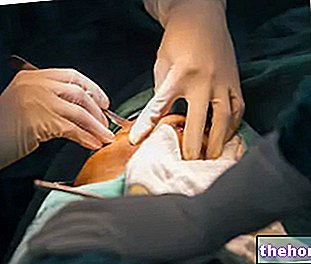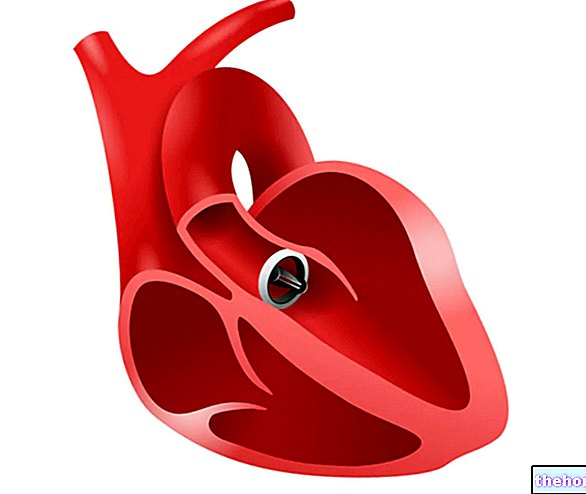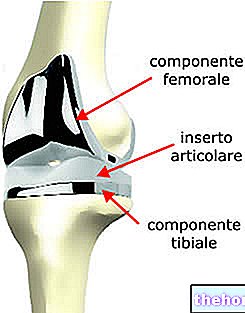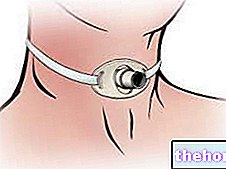Generality
Nephrectomy is the surgical operation of partial or total removal of one or both kidneys.
There are three types of nephrectomy: radical nephrectomy, partial nephrectomy and simple nephrectomy.

However, surgeons may also resort to the operation in question for a kidney transplant or in the presence of severe non-neoplastic kidney disease.
There are three operative modalities with which it is possible to perform a nephrectomy: the "open" surgical procedure, the robotic-assisted laparoscopic procedure.
At the end of the operation, hospitalization is foreseen, the duration of which depends on the modalities of intervention.
What is nephrectomy?
Nephrectomy is the partial or total removal of one or both kidneys.
When it is reserved for one kidney only, it takes the specific name of unilateral nephrectomy; when it is reserved for both kidneys, it takes the specific name of bilateral nephrectomy.
The word "nephrectomy" derives from the "union of two terms of Greek origin: nephrós (νεϕρός) - which means "kidney" - and ectomy (ἐκτομή) - which means "resection", "removal".
Please note: readers are reminded that the presence of only one kidney does not prevent a human being from leading a normal and healthy life.
TYPES
There are three different types of nephrectomy:
- Radical (or complete) nephrectomy: is the surgery to remove a kidney and some structures associated with it, such as the ureter, the adrenal gland and the surrounding fatty tissues.
- Partial nephrectomy: is the surgical procedure of removing a section of a kidney and the tissues adjacent to the removed section.
- Simple nephrectomy: it is the surgical operation of removing a kidney, sparing the adrenal and other adjacent structures.
Obviously, all three of these types of nephrectomy can be unilateral or bilateral, depending on the needs.
Uses
The conditions that require nephrectomy are:
- The presence of kidney cancer;
- The presence of non-neoplastic kidney disease, such that one or both kidneys are severely damaged;
- The donation of a kidney.
KIDNEY CANCER
Kidney cancer is the main reason for nephrectomy operations.
The decision on the type of nephrectomy to adopt is up to the operating surgeon and depends on various parameters, including: the staging of the neoplasm, the patient's state of health and the location of the tumor mass.
NEPHRECTOMY FOR THE PURPOSE OF DONATION
Nephrectomy for donation purposes is the surgical practice useful for kidney transplants from living donors.
From the point of view of efficacy, living donor kidney transplantation provides much better results than dead donor kidney transplantation.
An individual is a good candidate to donate one of their kidneys when they have good kidney function, do not have hypertension and / or diabetes, and have no family history of these two conditions.
Preparation
A few days before the nephrectomy operation, the patient must undergo a series of medical checks - the so-called pre-operative examinations - and meet with the surgeon who will perform the operation, to be informed of the characteristics and implications of the operation.
Some topics of discussion of the "surgeon-patient meeting:
- Duration of the intervention;
- Allergies to drugs that could be used during or after surgery;
- Medicines taken by the patient for the treatment of other morbid conditions;
- Pharmacological therapies that should be interrupted in view of nephrectomy (eg: anticoagulants, antiplatelet agents, NSAIDs, etc.);
- Duration of hospitalization;
- Characteristics of pre-operative fasting.
Procedure
Surgeons have the possibility to carry out the nephrectomy operation in at least three different ways:
- Through an "open" surgery → "open" nephrectomy.
- Through a laparoscopic surgery → laparoscopic nephrectomy.
- Through robotic laparoscopy → robot-assisted laparoscopic nephrectomy.
Shortly before the nephrectomy operation begins, an anesthetist has the task of practicing general anesthesia to the patient; subjected to general anesthesia, the latter falls asleep and remains unconscious for the duration of the operation.
"OPEN HEAVEN" NEPHRECTOMY
The "open" nephrectomy involves making an "incision of several centimeters" on the abdomen or on the side where the kidney to be removed resides. Typically, the correct position is just below the rib cage.
This incision represents the opening through which the operating surgeon reaches and extracts the diseased kidney or to be donated to a recipient.
In most cases, in order to be able to extract the organ smoothly, it is essential to remove the last rib (obviously from the part where the kidney to be extracted takes place).
After the extraction, the surgeon closes the incision through some sutures.
LAPAROSCOPIC NEPHRECTOMY
Laparoscopy is a minimally invasive surgical technique, thanks to which surgeons can access the abdominal cavity and pelvic cavity of an individual, through much smaller incisions than those made during traditional "open" surgery.
The most representative surgical instrument of laparoscopy is the so-called laparoscope. Similar to a drinking straw, the laparoscope is built to be inserted into the abdominal and pelvic cavities and to view the contents of the latter, thanks to a camera, a light and a connection to an external monitor.
Generally three in number, laparoscopic incisions allow the introduction not only of the laparoscope, but also of those surgical instruments necessary for the removal of an organ or part of it.
Compared to "open" nephrectomy, laparoscopic nephrectomy has the following advantages:
- Shorter recovery times;
- Shorter hospital stay;
- Smaller surgical incisions
- Lower risk of post-operative complications.
ROBOT-ASSISTED LAPAROSCOPIC NEPHRECTOMY
Robot-assisted laparoscopy nephrectomy is a laparoscopic nephrectomy in which the operating surgeon uses a robotic instrument to remove the kidney of interest.
This robotic instrument, which responds to the commands of a special console, is composed of an exploratory camera and a series of mechanical arms, which effectively replace the surgeon's hands.
Post-operative phase
At the end of the nephrectomy, hospitalization is always foreseen.
The length of hospitalization varies according to the type of nephrectomy and the modality of intervention: for laparoscopic nephrectomy operations, hospitalization can last one night; for "open" nephrectomy procedures, it can last up to 7 days.
During the hospitalization period, the medical staff applies a urinary catheter to the patient - for the expulsion of urine - and periodically monitors the vital parameters (pressure, heart rate, temperature, etc.).
For discharge and especially for returning home, the patient should ask for the support of a relative or a close friend.
Main activities to avoid in the weeks following the nephrectomy:
Tips for a better post-operative life:
- Pain at the incision site
- Numbness
- Pain or discomfort when breathing
- Confusional state, nausea, feeling of vomiting etc; they are consequences of general anesthesia
- Don't lift weights for at least 6 weeks
- Do not engage in motor activities of a certain intensity until otherwise indicated by the doctor
- Periodically monitor the health of the remaining kidney;
- Practice healthy physical activity;
- Adopt a healthy diet, as directed by the attending physician
Risks and complications
Thanks to advances in surgical medicine, today's nephrectomy surgeries are relatively safe and low-risk.
The most common complications are the classic ones of any major surgery procedure, namely:
- Development of infections;
- Blood loss (bleeding) from the incisions
- "Post-operative pneumonia";
- Allergic reactions to anesthetics.
Among the less common complications, the reduced function of the remaining kidney (when, of course, the nephrectomy is unilateral) deserves a mention.
DIALYSIS AND BILATERAL NEPHRECTOMY
Patients undergoing bilateral nephrectomy require dialysis for the rest of their lives, just like people with severe kidney failure.
Results
The benefits of a nephrectomy depend on several factors, primarily the patient's general health and the severity of the condition that required the intervention.
Regarding the most effective types of nephrectomy and lower risk of complications, several studies have shown that partial nephrectomy is more associated with a complete maintenance of renal function, compared to radical or simple nephrectomy (which, on the other hand, more frequently tend to precede a functional decline of the remaining kidney).
These studies are reliable, but we must remind the reader that some research has shown the exact opposite. Thus, the debate regarding the most effective type of nephrectomy is still widely open.
















.jpg)











